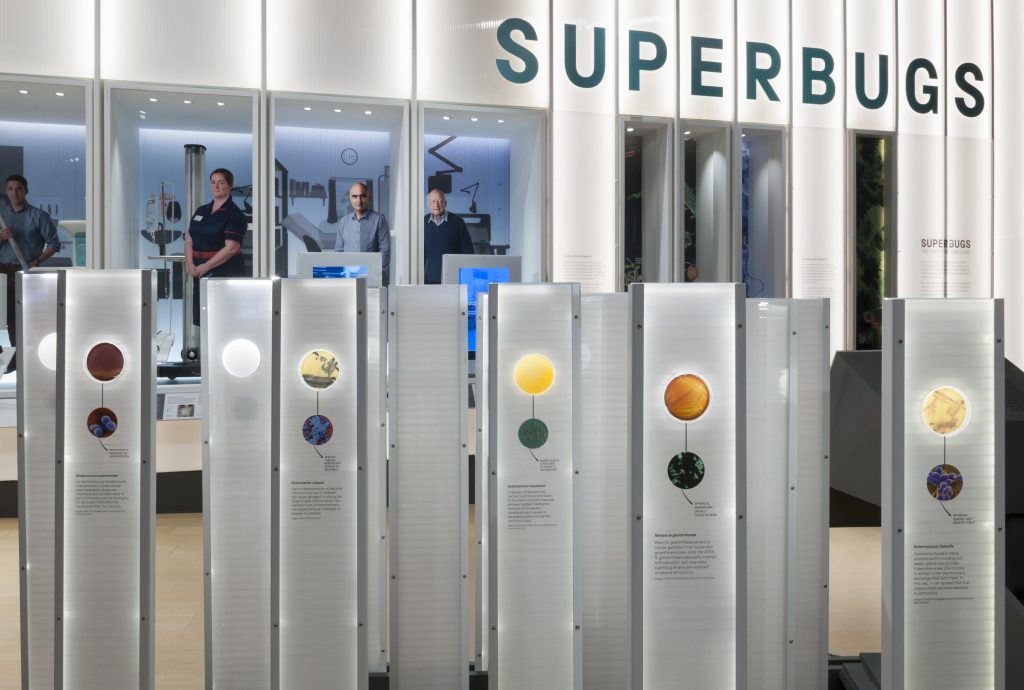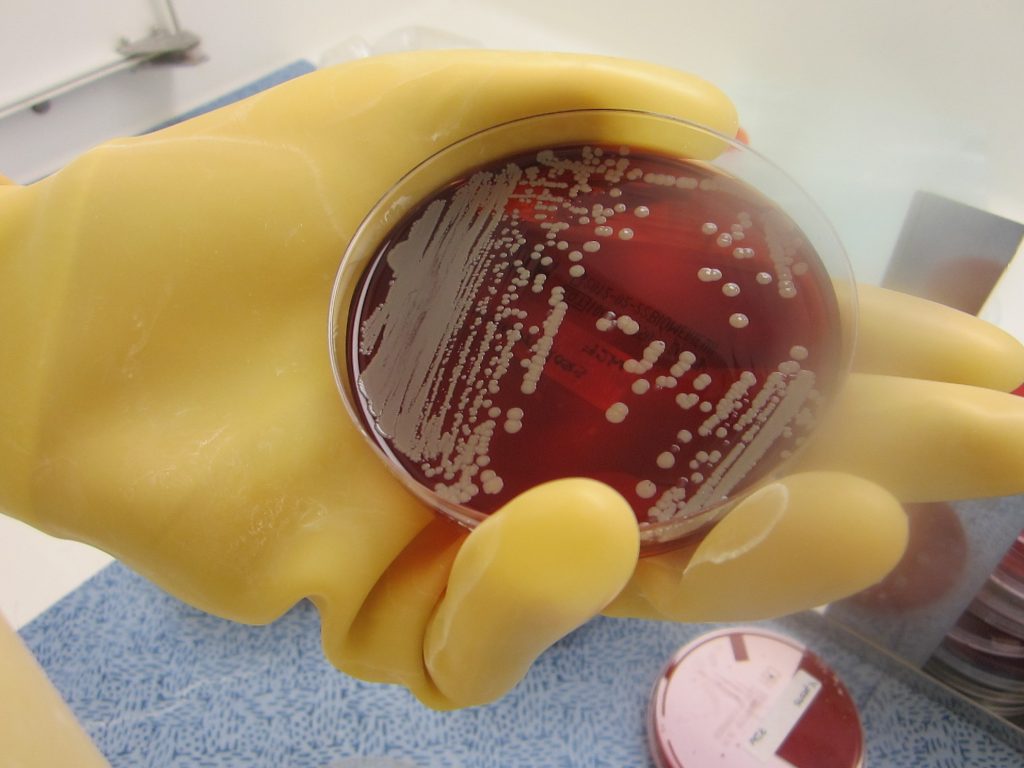During her role as Visiting Research Fellow in the Wellcome Trust Brighton and Sussex Centre for Global Health Research at Brighton and Sussex Medical School (BSMS) (2014 – 2022) Anna Dumitriu collaborated with researchers and explored issues around healthcare in low to middle income countries, including infectious diseases, ethics, genetic conditions such as Podoconiosis and women’s health. She has led workshops around the world exploring issues such as antibiotic resistance and health stigma.
Stigma: Walk in Your Shoes

Anna Dumitriu worked with the NIHR 5S Foundation and Professor Gail Davey OBE at BSMS to explore Podoconiosis and Mycetoma. Podoconiosis (podo) is a form of elephantiasis or swelling of the lower leg triggered by prolonged exposure to irritant minerals in red clay soils. There is no infectious or contagious agent: no parasite, no bacterium, no virus is involved. It was classified as a Neglected Tropical Disease by the World Health Organization in 2011. An estimated 4 million people in highland tropical Africa are affected with podoconiosis, and evidence suggests widespread endemicity in more than 15 countries throughout the world. Although the disease is both preventable (by avoiding contact with irritant soil) and treatable (through simple, inexpensive foot hygiene and protection), there are as yet no government-backed assistance programs for addressing prevention and treatment of podoconiosis. Individuals afflicted with podoconiosis suffer debilitating physical effects, including attacks when the leg becomes warm, painful and even more swollen, and are ostracised from their communities because of misconceptions about the cause of podoconiosis. Mycetoma a slow-growing, destructive infection of the skin and underlying tissues caused by either bacteria or fungi that also affects the feet and ankles.
Podoconiosis can be prevented by foot washing and shoe wearing, but this is not as simple as it sounds, in places where selling a pair of shoes can feed the family for a significant time, or where there are family hierarchies meaning only senior family members wear shoes. The sudden wearing of shoes can even indicate to others that a person has been diagnosed with the condition and they can be ostracised due to the stigma around it. The soil presented no harm as it requires extended exposure over many years and had be sterilised. In reality we do not know if any of us in the UK have the genetic make up to be at risk from podoconiosis but if we wore shoes made of the soil for many years we might find out.
Anna Dumitriu produced prototypes of sculptural works to communicate and raise awareness of these diseases using materials implicated in the disease, based on the idea of casting a pair of podoconisis shoes. Shoes made for podo patients by podo patients (who can find it difficult to find work due to stigma), the idea is that the shoes would be cast using the red mineral soil that can, after very prolonged exposure, cause the disease in those genetically predisposed to it. The soil, originally from Ethiopia, has been sterilised so it can be used in the work. Thanks to Alex May for support in the 3D scanning/visualisation of the work.
Walk in Your Shoes Workshops

Anna Dumitriu collaborated with Orleans House Gallery and Professor Davey in 2016 to create a series of workshops as part of “From the Outside In”, which was an art and science project for children, young people and adults with learning disabilities and special educational needs from ages 12-30. Dumitriu’s workshops focussed on the theme of “Genetics and Digital Technology” and as part of that she decided to explore issues around Podoconiosis. In the workshop the issues around podo were discussed and participants made shoes which told the story of what they had learned and suggested potential design solutions. But the shoes were different they were made of clay and physically contained the podoconiosis causing soil as an extension to Dumitriu’s work-in-progress “Walk in Your Shoes”.

Superbugs: The Fight For Our Lives at the Science Museum, London

Anna Dumitriu worked with Kevin Cole & Dr John Paul (PHE/Modernising Medical Microbiology), Professor Martin Llewellyn Dr Daire Cantillon, Dr James Price, and Dr Leena Al-Hassan (Brighton and Sussex Medical School) and Dr Nicola Fawcett (University of Oxford/Modernising Medical Microbiology) to help create a method to safely display a collection of ‘superbugs’ for The Science Museum London’s major exhibition “Superbugs: The Fight for Our Lives“. The display included fully killed specimens of MRSA, Neisseria gonorrhoeae, Acinetobacter baumanii, Klebsiella pneumoniae, Pseudomonas aeruginosa, Staphylococcus aureus, Staphylococcus epidermidis, Enterococcus faecalis, Enterobacter cloacae, & Streptococcus pneumoniae.
Trust me, I’m an Artist

Trust me, I’m an Artist investigates the new ethical issues arising from art and science collaboration and considers the roles and responsibilities of the artists, scientists and institutions involved. At each event (before a live audience) an artist proposes an artwork they want to make to a specially formed ethics committee (following the rules and procedures typical for the host country), the ethics committee then debates the proposal and comes to a decision, the artist is then informed of the ethics committee’s decision and, alongside the audience, everyone can enter into a discussion about the result. The project aims to reveal the mechanisms that drive this usually hidden ethics process, enabling the wider public to understand the driving forces behind ethical decisions and the role of artists working in scientific settings more deeply.
Trust Me, I’m an Artist: Developing ethical frameworks for artists, cultural institutions and audiences engaged in the challenges of creating and experiencing new art forms in biotechnology and biomedicine in Europe” was funded by the Creative Europe programme of the European Union. The project is led by artist Anna Dumitriu in collaboration with ethicist Professor Bobbie Farsides (BSMS) and coordinated by Waag Society (NL) in collaboration with Brighton and Sussex Medical School (UK), The Arts Catalyst (UK), Kapelica Gallery / Kersnikova (SI), Medical Museion (DK), and Leonardo Olats (FR).
Creative Communication: Art and Global Health
Anna Dumitriu led an eight week accredited course at Brighton and Sussex Medical School (BSMS) in 2016 on “Creative Communication: Art and Global Health” to enable students to explore issues in global health through art and creative thinking, as well as other courses on “Creative Communication: Art and Medicine” and “Art and Microbiology” in 2014 and 2015.
